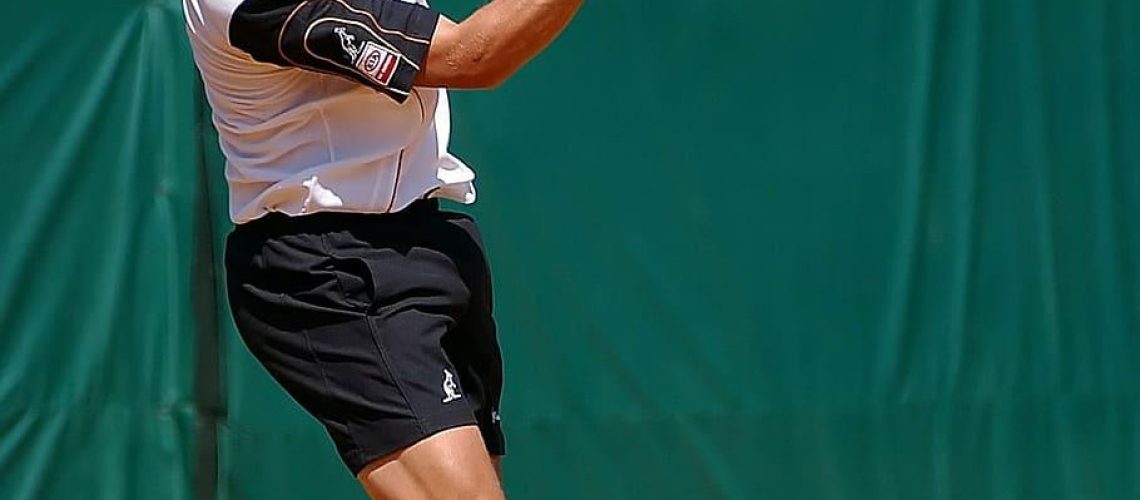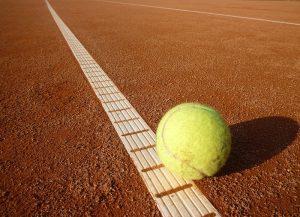We may earn money or products from the companies mentioned in this post.
Brief History of Tennis Shoes

Tennis shoes have come a long way since their early origins, evolving into the stylish and high-performance footwear we know today The development of tennis shoes can be traced back to centuries ago when people started realizing the need for specialized footwear for sports activities
Early Origins and Development
The earliest form of tennis shoes can be seen in ancient civilizations such as Egypt and Greece, where athletes would wear simple sandals made from natural materials like papyrus and leather These early iterations provided minimal protection and support but laid the foundation for future advancements
As time went on, different cultures started experimenting with various materials and designs to enhance athletic performance In the 18th century, rubber-soled shoes gained popularity due to their improved traction on court surfaces, providing players with better stability during matches
Evolution Over Time
The true revolution in tennis shoe design came about in the mid-20th century when companies began incorporating new technologies and materials The introduction of vulcanized rubber soles by manufacturers like Adidas and Converse brought about superior durability and grip
In recent decades, advancements in technology have further propelled the evolution of tennis shoes Lightweight materials like mesh fabrics provide breathability, while cushioning systems offer enhanced comfort and shock absorption Designs have become more streamlined to optimize agility on the court
Importance of Choosing the Right Tennis Shoes

Selecting the right pair of tennis shoes is crucial for both professional athletes and recreational players alike The choice not only affects performance but also plays a significant role in injury prevention
Performance Improvement
The right tennis shoes can greatly improve an athlete’s performance on the court Proper footwear provides stability during lateral movements, allowing players to change directions quickly and maintain balance Good grip and traction ensure efficient movement on different court surfaces, maximizing agility and speed
Furthermore, modern tennis shoes with advanced cushioning systems offer superior shock absorption, reducing the impact on joints and muscles This allows players to comfortably endure long matches while minimizing fatigue
Injury Prevention
Choosing the right tennis shoes is essential for preventing injuries Tennis involves repetitive movements such as running, jumping, and sudden stops, which can put strain on various parts of the body
A well-fitting pair of tennis shoes offers proper support to the feet, ankles, and arches This helps in maintaining alignment during movements, reducing the risk of sprains or twists Additionally, adequate cushioning absorbs shocks and reduces the impact forces that can lead to stress fractures or other overuse injuries
Please note that HTML formatting has been applied for headings (
and
) as well as paragraphs (
).
Design and Construction of Tennis Shoes

Tennis shoes are specially designed footwear that offer unique features to enhance performance on the court These features set them apart from other athletic footwear, making them essential for tennis players of all levels
Specific features that set tennis shoes apart from other athletic footwear
Traction on various court surfaces
One key feature of tennis shoes is their ability to provide optimal traction on different court surfaces Whether you’re playing on hard courts, clay courts, or grass courts, tennis shoes are designed with specific outsole patterns and rubber compounds to ensure maximum grip and stability
Lateral support for side-to-side movements
Tennis involves a lot of quick lateral movements, so it’s crucial to have proper support in your shoes Tennis shoes feature reinforced upper materials and stabilizing technologies in the midsole and outsole to provide the necessary lateral support This helps prevent injuries and allows players to move confidently across the court
Materials used in tennis shoe construction
Uppers: synthetic leather, mesh, and textiles
The upper part of a tennis shoe is typically made from materials such as synthetic leather, mesh, or textiles These materials offer breathability, flexibility, and durability Mesh panels allow for airflow to keep feet cool during intense matches, while synthetic leather provides added support and protection
Midsoles: EVA foam, polyurethane, or proprietary cushioning systems
The midsole is responsible for cushioning and shock absorption Most tennis shoes use EVA foam or polyurethane in their midsoles to provide a comfortable feel underfoot Some brands also incorporate proprietary cushioning systems that offer enhanced responsiveness and energy return
Outsoles: rubber compounds optimized for durability and traction
The outsole is the bottom part of the shoe that comes into direct contact with the court surface Tennis shoe outsoles are made from rubber compounds specially designed to optimize durability and traction The patterns on the outsole provide grip on different court surfaces, ensuring players can move swiftly without slipping
How to Choose the Right Tennis Shoes for You

Understanding your foot type and playing style
Determining arch type: low, neutral or high arches
Before choosing tennis shoes, it’s important to understand your foot type, specifically your arch type Whether you have low arches (flat feet), neutral arches, or high arches can affect the level of support and cushioning you need in your shoes
Matching shoe features to your specific needs
To find the right tennis shoes, consider factors such as cushioning levels and stability requirements that align with your playing style If you require more cushioning for impact absorption or increased stability for aggressive movements, choose shoes that offer these features
Factors to consider when selecting tennis shoes
Budget considerations
Your budget is an important factor when selecting tennis shoes While there are various price ranges available, it’s essential to find a balance between quality and affordability Investing in a good pair of tennis shoes can improve performance and prevent injuries in the long run
Brand preferences
Some players may have specific brand preferences based on personal experiences or endorsements by professional athletes It’s worth considering reputable brands known for their quality craftsmanship, innovative technologies, and dedication to creating top-performing tennis footwear
Court surface compatibility
The type of court surface you primarily play on should influence your choice of tennis shoes Different court surfaces require different traction patterns and outsole materials for optimal performance Ensure that the shoes you select are designed specifically for the court surface you’ll be playing on
Additional Tips for Caring for Your Tennis Shoes

When it comes to taking care of your tennis shoes, proper cleaning methods can make a world of difference After each use, take the time to clean the exterior with a brush or cloth This will help remove any dirt or debris that may have accumulated during your game and prevent it from causing damage or discoloration over time
Another important aspect of shoe maintenance is dealing with odors Let’s face it, after intense matches, our shoes can develop quite the funk To combat this, consider using deodorizers specifically designed for sports shoes or simply airing them out regularly By keeping your shoes fresh and odor-free, you’ll not only extend their lifespan but also increase your own comfort on the court
Extending the life of your tennis shoes
If you’re an avid player who frequently hits the court, rotating between two pairs of tennis shoes can be a game-changer By alternating between two sets, you allow each pair ample time to fully dry out and recover from any wear and tear sustained during play This simple practice can significantly prolong the lifespan of your beloved kicks
In addition, avoiding abrasive surfaces like concrete or gravel is crucial in preserving your tennis shoes’ durability These rough terrains can cause excessive wear and tear on the outsole, leading to premature deterioration Whenever possible, stick to playing on tennis courts or other suitable surfaces to maintain the integrity of your footwear
Knowing when to replace your tennis shoes
To ensure optimal performance and prevent potential injuries, it’s essential to know when it’s time to retire your old faithfuls One key indicator is monitoring the outsole for signs of excessive wear If you start noticing significant bald spots or uneven tread patterns that compromise traction, it’s a clear sign that it’s time for a new pair
Additionally, pay attention to any changes in comfort and support levels As shoes age, the cushioning and stability they once provided may diminish If you find that your feet are no longer adequately supported or you experience discomfort during play, it’s a good indication that you should start considering investing in a fresh pair of tennis shoes
By following these additional tips for caring for your tennis shoes, you’ll not only keep them looking sharp but also enhance their longevity and performance on the court Remember, taking proper care of your footwear is an investment in both your game and your overall foot health
Useful Links

Do you really need tennis shoes? Here’s all I wish I had …
How to Choose the Right Tennis Shoe
Court Shoes for Tennis and Pickleball | – Game-Set-Match
Tennis shoes vs trainers. What is the difference?
Tennis Shoes vs Running Shoes
Tennis Shoes VS Sneakers: What’s the Difference?
Tennis Shoes vs Sneakers: What is the Difference?
Everything you Need to Know about Tennis Shoes • TennisAvid
Clay Court Shows Vs Hard Court Shoes – Tennis Express
What are Tennis Shoes – Everything You Need to Know
The Difference Between Tennis Shoes & Sneakers
Guide to Tennis Shoes – What to Wear on Grass, Clay and …
Running Shoes Vs Tennis Shoes – What’s The Difference?
Everything you need to know about clay-court tennis shoes
The Best Tennis Shoes for Women of 2023 – Travel + Leisure
Tennis Shoes vs Sneakers: What’s the … – Tennis Pursuits







